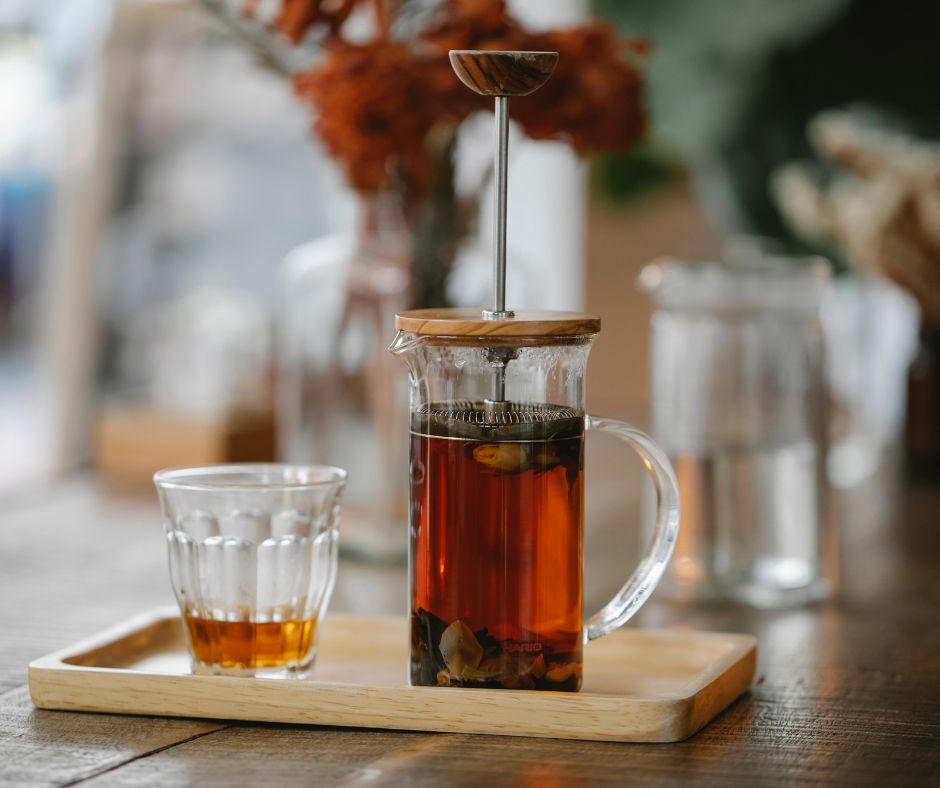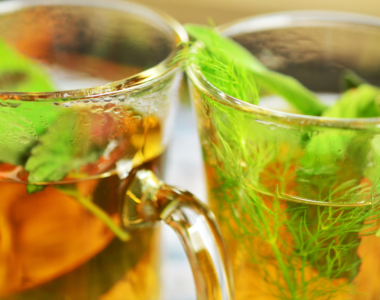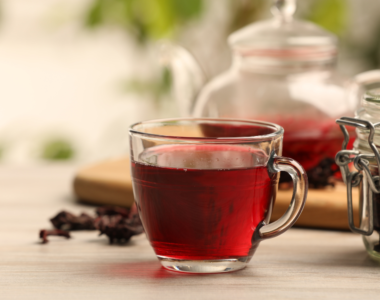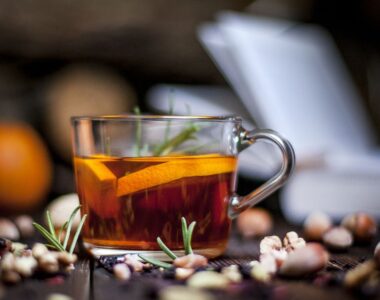
If you are a herbal tea lover, you have probably heard of Ceylon tea, one of the most famous and sought-after teas in the world. But do you know what makes Ceylon tea so special, and how you can create your own herbal tea blends with it? In this article, we will explore the history, types, benefits, and uses of Ceylon tea, as well as some tips and recipes for making your own delicious herbal tea blends with this exquisite tea.
Table of Contents
Introduction
Tea is one of the most popular beverages in the world, with a long and rich history that spans across cultures and continents. Tea has been used for centuries as a source of hydration, nutrition, medicine, ritual, and pleasure. There are many types of tea, each with its own unique flavor, aroma, color, and benefits. One of the most renowned and revered types of tea is Ceylon tea, which comes from the island nation of Sri Lanka, formerly known as Ceylon.
Ceylon tea is a type of black tea that is known for its bold flavor, fragrant aroma, and rich color. It is also available in other varieties, such as green, white, and oolong. Ceylon tea is produced in different regions of Sri Lanka, each with its own distinctive characteristics and qualities. Ceylon tea is not only delicious, but also nutritious and beneficial for health. It contains antioxidants, caffeine, and trace minerals that can help boost your immune system, metabolism, mood, and overall well-being.
One of the best ways to enjoy Ceylon tea is to blend it with other herbs and flowers that can enhance its flavor and benefits. Herbal tea blends are a great way to combine the synergistic qualities of different plant allies, and create your own custom brews that cater to your personal preferences and needs. You can use fresh or dried herbs from your garden or local market, or buy organic and fair trade herbs online. You can experiment with different combinations and proportions, and discover new tastes and sensations.
In this article, we will guide you through the process of making your own herbal tea blends with Ceylon tea. We will start by explaining what Ceylon tea is, where it comes from, how it is made, and what are its benefits. Then we will show you how to blend herbs with Ceylon tea, what are some basic steps and tips to follow, and what are some popular and delicious recipes to try. Finally, we will tell you where to buy high-quality Ceylon tea and herbs online or locally. By the end of this article, you will be able to sip the elegance of Ceylon tea in your own herbal tea blends.
What is Ceylon Tea?
Ceylon tea is a type of tea that is produced in Sri Lanka, an island country in the Indian Ocean. Sri Lanka has a tropical climate and diverse terrain that provide ideal conditions for growing tea. The country has six main regions where tea is cultivated: Nuwara Eliya, Uva, Dimbula, Kandy, Uda Pussellawa, and Ruhuna. Each region has its own microclimate, soil type, elevation, and harvesting season that influence the flavor and quality of the tea.
History and Origin of Ceylon Tea
Tea was introduced to Sri Lanka by the British in the 19th century as a replacement crop for coffee, which was devastated by a fungal disease. The first tea plantation was established in 1867 by James Taylor, a Scottish planter who experimented with different methods of cultivation and processing. He also built a simple factory to produce black tea using machines he designed himself. His success inspired other planters to follow suit, and soon Ceylon tea became a major export commodity for the British colony.
Ceylon tea gained international recognition and popularity in the late 19th and early 20th centuries, especially in Europe and the Middle East. It was praised for its flavor, aroma, color, and quality, and became a symbol of luxury and refinement. Ceylon tea was also used as a diplomatic gift by the British government to other countries and leaders. For example, in 1893, Queen Victoria presented Ceylon tea to the Russian Tsar Nicholas II as a gesture of goodwill.
After Sri Lanka gained its independence from Britain in 1948, the tea industry underwent several changes and challenges. The government nationalized the tea estates and created the Tea Board to regulate and promote the industry. The civil war that lasted from 1983 to 2009 also affected the production and export of tea, as well as the lives and livelihoods of the tea workers. Despite these difficulties, Ceylon tea has maintained its reputation and demand in the global market, and continues to be a source of pride and income for the country.
Types and Varieties of Ceylon Tea
Ceylon tea is mainly classified by its color, which depends on the degree of oxidation or fermentation that the tea leaves undergo during processing. Oxidation is a chemical reaction that occurs when the enzymes in the tea leaves are exposed to oxygen, resulting in changes in color, flavor, and aroma. The more oxidized the tea leaves are, the darker and stronger they become.
The main types of Ceylon tea are:
• Black tea: This is the most common and popular type of Ceylon tea. It is fully oxidized, which gives it a dark brown or black color, a robust flavor, and a malty aroma. It can be further categorized by its grade, which indicates the size and quality of the tea leaves. The grades range from whole leaf (such as OP or Orange Pekoe) to broken leaf (such as BOP or Broken Orange Pekoe) to fannings (such as BOPF or Broken Orange Pekoe Fannings) to dust (such as PD or Pekoe Dust). The smaller the leaf size, the faster and stronger the infusion.
• Green tea: This is a type of Ceylon tea that is minimally oxidized, which preserves its green color, fresh flavor, and grassy aroma. It is also rich in antioxidants that can help prevent oxidative stress and inflammation in the body. Green tea is usually steamed or pan-fired to stop the oxidation process, then rolled and dried. It can be further categorized by its shape, such as gunpowder (rolled into small pellets), chun mee (curled into thin eyebrows), or young hyson (twisted into long threads).
• White tea: This is a type of Ceylon tea that is made from the youngest and most tender buds and leaves of the tea plant. It is also known as silver tips or golden tips, because of the fine white or golden hairs that cover them. White tea is not oxidized at all, which gives it a pale yellow or golden color, a delicate flavor, and a floral aroma. It is also very high in antioxidants that can help protect against aging and disease. White tea is usually sun-dried or air-dried without any rolling or shaping.
• Oolong tea: This is a type of Ceylon tea that is partially oxidized, which gives it a range of colors from green to brown to red, depending on how long it is oxidized. It also has a complex flavor and aroma that can vary from floral to fruity to nutty to smoky. Oolong tea is usually withered, bruised, rolled, oxidized, roasted, and dried in multiple stages that require skill and precision.
Health Benefits of Ceylon Tea
Ceylon tea is not only tasty but also healthy. It contains various compounds that can have positive effects on your body and mind. Some of the health benefits of Ceylon tea are:
• Antioxidant activity: Ceylon tea contains polyphenols, flavonoids, catechins, and other antioxidants that can help scavenge free radicals and prevent oxidative damage to your cells and DNA. Free radicals are unstable molecules that can cause inflammation, aging, and chronic diseases such as cancer, diabetes, and cardiovascular disease. Antioxidants can help neutralize free radicals and protect your health.
• Caffeine content: Ceylon tea contains caffeine, a stimulant that can help boost your energy, alertness, mood, memory, and cognitive function. Caffeine can also help increase your metabolism, fat burning, endurance, and performance. However, caffeine can also have some side effects such as anxiety, insomnia, jitteriness, dehydration, and addiction if consumed in excess or by sensitive individuals. Therefore, it is advisable to moderate your intake of caffeinated teas and avoid drinking them late
How to Make Your Own Herbal Tea Blends with Ceylon Tea
Herbal tea blends are a great way to enjoy the benefits of different herbs and spices, as well as adding some variety to your tea drinking. Ceylon tea is a type of black tea that has a rich and full-bodied flavor, and it can be used as a base for many herbal tea blends. Here are some tips on how to make your own herbal tea blends with Ceylon tea:

Choose your herbs and spices
You can use fresh or dried herbs and spices, depending on what you have available and what you prefer. Some common herbs and spices that go well with Ceylon tea are mint, ginger, cinnamon, cardamom, cloves, rose petals, lavender, chamomile, lemon balm, and lemongrass. You can also add some citrus peels, such as orange or lemon, for a zesty touch.
Experiment with different ratios and combinations
There is no fixed rule on how much of each herb or spice to use in your blend, so feel free to experiment and find what suits your taste. A general guideline is to use about one teaspoon of dried herbs or spices, or two teaspoons of fresh herbs, for every cup of Ceylon tea. You can also mix and match different herbs and spices to create your own unique blend.
Brew your blend
To brew your herbal tea blend, you will need a teapot, a strainer, and some boiling water. First, add your Ceylon tea leaves and your herbs and spices to the teapot. Then, pour boiling water over them and let them steep for about 3 to 5 minutes, depending on how strong you like your tea. Finally, strain the tea into your cup and enjoy!
Where to Buy High-Quality Ceylon Tea and Herbs
Different Colors of Ceylon Tea
Ceylon tea comes in different colors, such as black, green, white, and oolong, depending on the processing and production methods. Each color has its own characteristics and benefits. For example, green Ceylon tea contains a compound called EGCG, which has powerful health-promoting properties. Black Ceylon tea helps block the digestion and absorption of fat, which may aid weight loss.
Add herbs to enhance Ceylon tea flavor and aroma
One of the best ways to enjoy Ceylon tea is to add some herbs to enhance its flavor and aroma. Herbs are mostly combined with Ceylon green tea to create a smooth and enlivened flavor. Among the herb-flavored green teas are the lemongrass-flavored green tea, chamomile green tea, mint green tea, and jasmine green tea. These herbs not only add a refreshing taste to the tea but also have their own health benefits, such as soothing digestion, relieving stress, and fighting inflammation.
Make a perfect cup of Ceylon tea with herbs
To make a perfect cup of Ceylon tea with herbs, you need to follow some simple steps. First, boil some water and let it cool slightly. Then, add one teaspoon of Ceylon tea leaves and one teaspoon of your preferred herb to a teapot or infuser. Pour the hot water over the tea leaves and herb and let it steep for about 3 to 5 minutes. You can adjust the steeping time according to your taste preference. Finally, strain the tea into a cup and enjoy it hot or cold.
Ceylon tea and herbs are a great combination for anyone who loves tea and wants to experience the rich flavor and health benefits of this beverage. You can find high-quality Ceylon tea and herbs online or in specialty stores. Try different varieties and flavors to find your favorite one.
What makes Ceylon herbal tea blends unique compared to other types of herbal teas?
Ceylon herbal tea blends are renowned for their exquisite taste, quality, and distinct flavors derived from the lush tea gardens of Sri Lanka. The unique terroir of the region, combined with traditional cultivation and processing methods, results in teas that are flavorful, aromatic, and exceptionally smooth.
What are some common herbal ingredients used in Ceylon herbal tea blends, and what are their health benefits?
Ceylon herbal tea blends often feature a variety of herbs and botanicals, such as cinnamon, ginger, lemongrass, and cardamom, each offering its own set of health benefits. For example, cinnamon may help regulate blood sugar levels, while ginger aids digestion and supports immune function.
How can I choose the right Ceylon herbal tea blend to suit my taste preferences and health goals?
With a wide range of flavors and ingredients to choose from, selecting the perfect Ceylon herbal tea blend can be a delightful adventure. Consider your flavor preferences, whether you prefer spicy, citrusy, or floral notes, and explore blends that align with your health and wellness goals.
Are Ceylon herbal tea blends caffeine-free, making them suitable for consumption at any time of day?
Yes, Ceylon herbal tea blends are typically caffeine-free, making them an excellent choice for those seeking a soothing and refreshing beverage to enjoy throughout the day, including evenings. They offer a natural way to hydrate and unwind without the stimulating effects of caffeine.
What is the best way to brew Ceylon herbal tea blends to extract their full flavor and aroma?
To brew Ceylon herbal tea blends, simply steep the tea bag or loose leaves in hot water for 5-7 minutes, allowing the herbs and spices to infuse fully. For optimal flavor extraction, cover the tea while steeping and use freshly boiled water at the recommended temperature for each specific blend.
Can Ceylon herbal tea blends be enjoyed both hot and cold, offering versatility for different preferences and seasons?
Absolutely! Ceylon herbal tea blends can be enjoyed both hot and cold, providing versatility to suit different preferences and seasons. Enjoy a steaming cup of herbal tea on chilly mornings or indulge in a refreshing iced tea during warm summer days.
Are there any cultural or historical significance associated with Ceylon herbal tea blends?
Ceylon, now known as Sri Lanka, has a rich tea culture dating back centuries. The country’s tea industry has played a significant role in its economy and cultural heritage, with Ceylon tea renowned worldwide for its exceptional quality and craftsmanship.
Can Ceylon herbal tea blends be incorporated into a mindful wellness routine, promoting relaxation and self-care?
Yes, incorporating Ceylon herbal tea blends into a mindful wellness routine can be a nourishing and rejuvenating experience. Taking a moment to savor the aroma and flavor of a cup of herbal tea can promote relaxation, mindfulness, and self-care amidst the busyness of daily life.
Are there any ethical or sustainable practices associated with the production of Ceylon herbal tea blends?
Yes, many tea producers in Sri Lanka adhere to ethical and sustainable practices aimed at preserving the environment, supporting local communities, and ensuring fair labor practices. Look for certifications such as Fair Trade or Rainforest Alliance to ensure your tea is sourced responsibly.
Where can I purchase authentic Ceylon herbal tea blends in the United States, ensuring quality and freshness?
Authentic Ceylon herbal tea blends can be found at specialty tea shops, online retailers, and select grocery stores across the United States. Look for reputable brands known for their commitment to quality, sustainability, and transparency in sourcing to ensure you’re getting the finest Ceylon teas.



